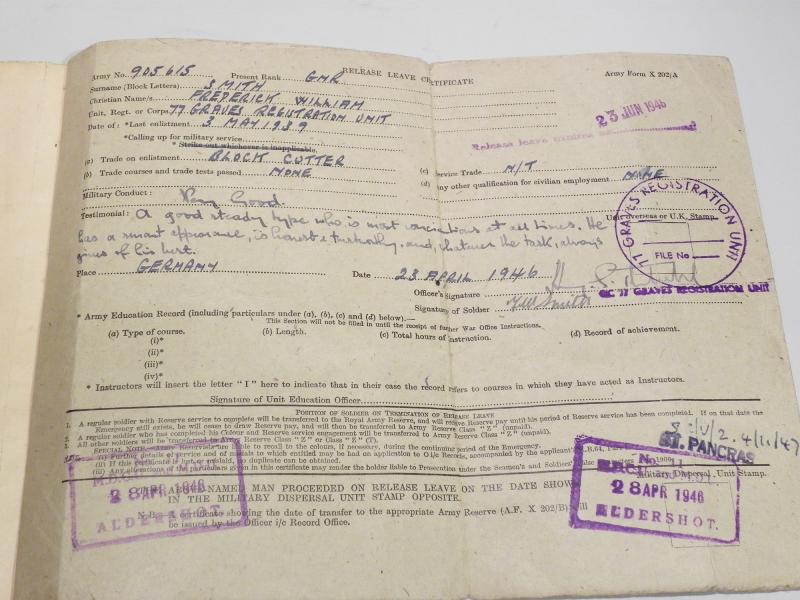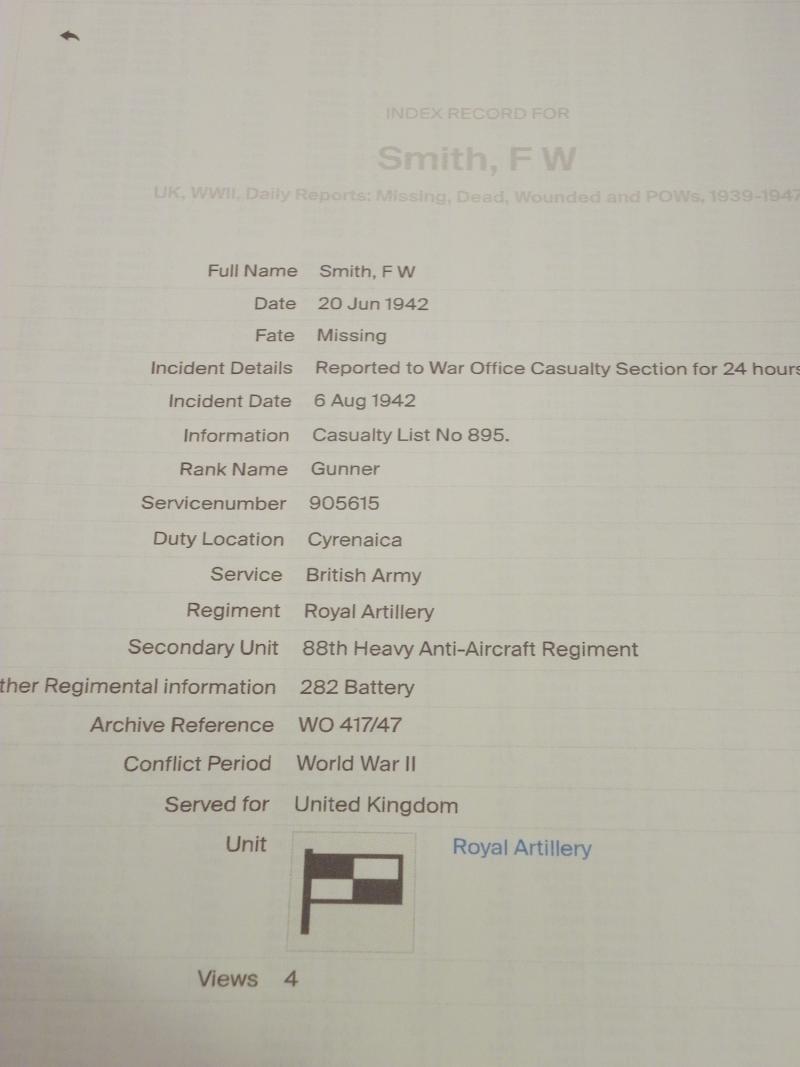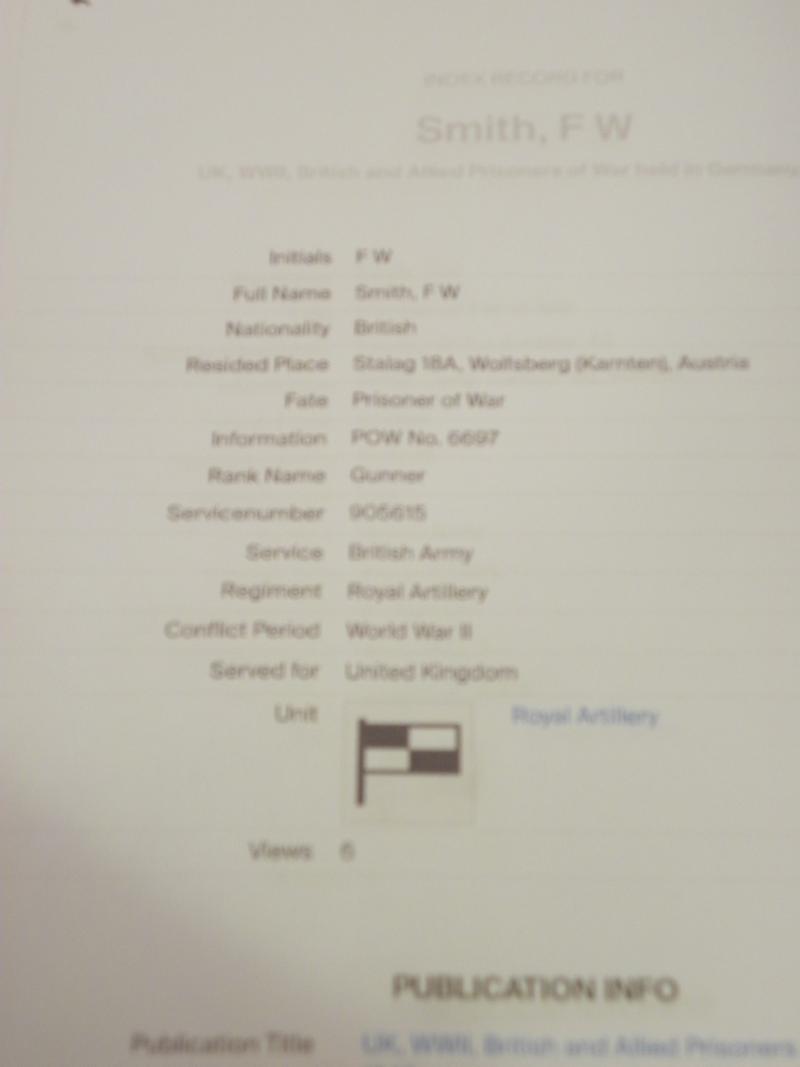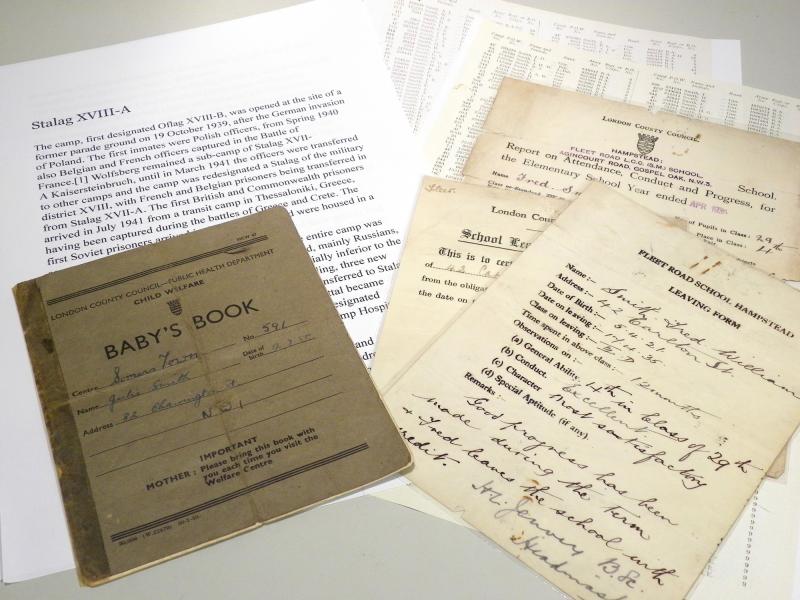WW2 Africa Star Medal Group to Smith 88th HAA Regiment. Taken POW Tobruk.
An interesting WW2 Group comprising of the 1939/45 star, Africa star, Defence and 1939/45 War medal. Soldiers Release Book, School certificates etc to 905615 Gunner Frederick William Smith Royal Artillery (TA). Also entitled to the 8th Army Bar (missing)
Fred Smith was born on 5th May 1921 and lived and educated in Hampstead London. He was serving with the 53rd (London) Medium Regiment RA Territorial Army. He may have joined the invasion of France in 1940 and evacuated from Dunkirk, or he remained in London and formed part of the Anti-Aircraft regiment that fought against the relentless Luftwaffe attacks during the Blitz of 1940.
Either way he was posted to the 282 battery 88th Heavy Anti-Aircraft Regiment and sent overseas to Egypt in early 1941 and landed at Port Tewfik in Egypt on 23rd July 1941. It joined 2nd AA Brigade under British Troops in Egypt, responsible for defending the port of Alexandria and the Suez Canal, which had come under increasing air attack during the previous month. By the autumn the regiment was deployed in the Suez and Shallufa area, with 283 HAA Bty detached to Alexandria. However, in October the regiment was switched to the 12th Anti-Aircraft Brigade, which was tasked with defending the landing-grounds of the Desert Air Force in preparation for Eighth Army's new offensive in the Western Desert known as Operation Crusader.
The first phase of that operation began in November. Over the succeeding weeks the 88th Heavy AA Regiment cooperated with the 27th Light AA Regiment, and the 107th Light AA Battery armed with Bofors 40 mm guns as one large unit.
The first phase of 'Crusader' lasted until January 1942, when General Erwin Rommel counter attacked and the Eighth Army fell back to the Gazala Line, which consisted of a chain of defensive boxes. On 22nd May 1942, 88th HAA Regt and moved to join 4 AA Bde in Tobruk and on 20th June the Panzerarmee Afrika attacked Tobruk with massed air support, penetrated a weak spot on the eastern defensive perimeter and captured the port. Much of the garrison on the western perimeter had not been attacked but they were cut off from their supplies and transport, without the means to escape from Tobruk, the majority had to surrender; 33,000 prisoners were taken, of which Gunner Smith was one. He was not reported missing until weeks later, first it was thought he was a casualty but as the BRC received details of the prisoners that were taken at Tobruk came through it was discovered he was at camp 68 at Vetralla, Italy and then he was moved to Stalag 18A, Wolfsberg, Austria. Stalag XVIII A was one of the biggest POW camps in Austria, at its hight housing up to 48,000 prisoners of all nationalities.
In the autumn of 1943, after the fall of Italy, there was a new influx as a large contingent of Allied prisoners were transferred from Italy. Prisoners were housed, according to nationality, in barracks in sections joined together and separated by the surrounding barbed wire. Food rations were poor especially for the Russian prisoners and most prisoners worked on the neighbouring dam or roads. They were excavators, carpenters and labourers and many of them had specialist skills. They work in day and night shifts and each man works 10.5 hours a day with a 45 minute march either way, and the work was hard.
Stalag XVIII A was liberated on May 8th 1945 by five British soldiers who parachuted into a nearby field. The camp Commandant, Captain Steiner, subsequently handed over his command to the Senior British Medical Officer and Men of Confidence of the various nationalities.
Due to the amount of prisoner’s repatriation was slow, Gunner Smith was finally discharged in Germany on 23rd April 1946.
His medals are in excellent condition and have never been mounted or worn; along with various original paperwork comes pages of research to confirm the above.
An interesting Desert Rat group who saw action at home and in north Africa.
Code: 29423
120.00 GBP









